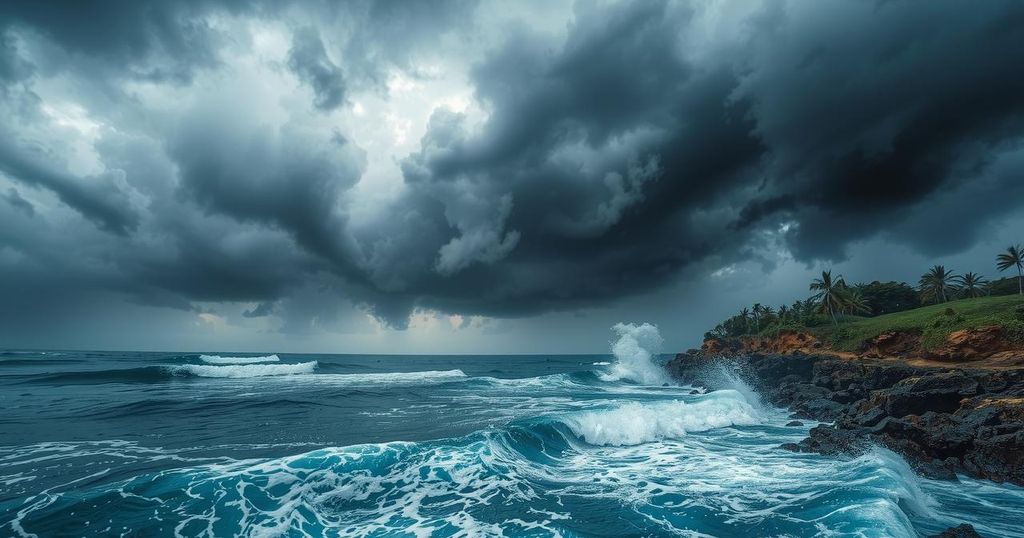Weather Update: Cyclone Zelia Threatens Western Australia Amidst Global Cold Spells

A tropical cyclone alert has been issued for Western Australia as low 18U is projected to become cyclone Zelia. In Canada, severe cold temperatures are affecting the west, while Europe prepares for a significant cold snap. These weather changes highlight the impact of polar air masses on regional climates.
The Bureau of Meteorology has announced a tropical cyclone alert for the north coast of Western Australia, focusing on a tropical low designated as 18U. This system is located near the Kimberley coast, producing strong winds, heavy rain, and storm surges affecting northern Australia starting Sunday night. A flood warning has also been issued as the cyclone is projected to strengthen and shift southwest toward the Pilbara region, set to bring significant precipitation and high winds by the end of the week.
Simultaneously, Canada is grappling with an intense cold snap, driven by polar air moving southwards. Western regions, particularly Calgary, Edmonton, and Saskatoon, are experiencing daytime temperatures between -10°C and -15°C and nighttime lows around -20°C to -30°C. The chilling conditions may lead to temperatures plummeting as low as -35°C, significantly dipping below seasonal averages.
In Europe, a cold wave is forecasted, with temperatures in northern regions gradually decreasing this week. A notable drop of 2°C to 5°C below average is anticipated, intensifying in the following week, especially in Scandinavian areas where drops of 5°C to 10°C are expected. This cold trend is attributed to a high-pressure system over eastern Europe that fosters an easterly flow, bringing in a frigid polar airmass, although its severity remains uncertain.
In summary, tropical cyclone Zelia is forming off Western Australia, expected to bring severe weather to the region. Canada is currently facing an extreme cold spell, with potential record low temperatures in several cities. Meanwhile, Europe is anticipating a notable cold snap, particularly in northern areas, due to a polar air mass. Monitoring these weather patterns is crucial for preparedness and response.
Original Source: www.theguardian.com






